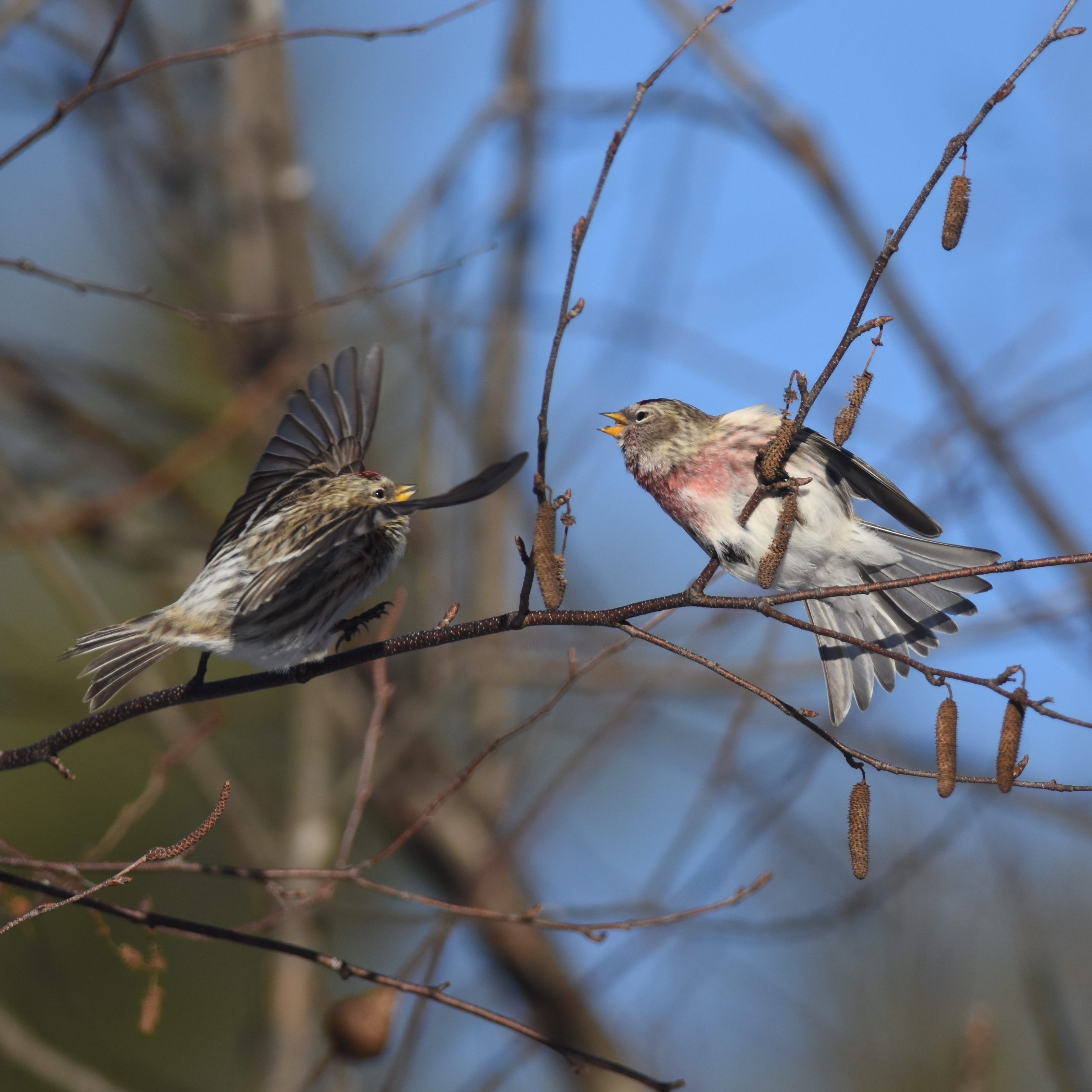
Since our recent post highlighting the fall “irruption” of the Northern saw-whet owl, bird watchers have been taking to the snowy fields and dales of the region in search of elusive winter visitors of other stripes.
On the cold, snowy morning of December 18th 2020, 33 intrepid birders set out to tally the local avian fauna as part of the fifty-sixth consecutive North Berkshire Christmas Bird Count. They fanned out in (socially distanced) groups — on foot, snow-shoes and in cars — to cover a 176 square mile circle that ranges from Williamstown to New Ashford over to Cheshire and up to North Adams. This is one of 1430 count circles that comprise the Audubon Society’s Christmas Bird Count network, an annual nationwide survey of birds that goes back to 1900.
In spite of the cold, wintry conditions, our North Berkshire team tallied 3271 birds of 51 species – both impressive numbers for this zone. Here’s a snapshot of the most abundant birds of that day:
| European Starling | 668 |
| Black-capped Chickadee | 313 |
| American Crow | 302 |
| Rock Pigeon (Feral Pigeon) | 238 |
| Blue Jay | 202 |
| Mourning Dove | 168 |
| Mallard | 146 |
| House Sparrow | 121 |
| Cedar Waxwing | 85 |
| White-breasted Nuthatch | 78 |
A closer look illuminates the substantial role that humans have had in shaping wildlife populations in our region. Of these top ten, three — the starling, rock pigeon and house sparrow — were introduced to his continent and are not otherwise native to the area. Two others, the mallard and mourning dove, are considered “game species” and have been manipulated by federal and state wildlife agencies to boost their populations for decades. Another pair, the American crow and the blue jay, are classic “generalists;” with their wide range of dietary and habitat preferences, they have benefitted royally from modern human activities such as large-scale agriculture and suburbanization. Notably, few of these birds were counted in Hopkins Forest.

By contrast, the remaining three on the top ten list – the black-capped chickadee, cedar waxwing and white-breasted nuthatch — were more numerous in the forest and its immediate surroundings, places with a lighter human footprint. Indeed, the black-capped chickadee might well have been the champion species in pre-colonial times had Christmas bird counts been around then. With the region’s vast hardwood and pine forests, it’s little wonder that this small stalwart has stood as Massachusetts’ official state bird for 80 years. And the white-breasted nuthatch would have been a worthy nominee for that distinction as well — it’s hard to walk through the woods at any time of year without seeing a few clinging from the trunks of our hardwoods.

Other notables from the day were four species that made their biggest showings in the 56-year history of this count: the bald eagle (4), red-bellied woodpecker (40), red-breasted nuthatch (34) and Carolina wren (15). Two of these – the red-bellied woodpecker, and the Carolina wren – have more southern affinities. They were seldom found in the early days of the North Berkshire count but have been increasing in recent years. It’s plausible that the trend toward milder winters may be abetting their winter survival and subsequent breeding success, driving population increases at the northern limits of their ranges.
The red-breasted nuthatch is a different case entirely. This species, closely associated with conifers, has a more northern distribution, and, in fact, tends to be pretty scarce in Hopkins Forest, with its predominant hardwood cover. However, this year, this smaller cousin of the ubiquitous white-breasted nuthatch appears to be experiencing an irruption – a surge of individuals coming down from their normal wintering grounds in pursuit of more available food (see January post on the Northern saw-whet).

We can detect this irruption phenomenon with some other recent visitors as well, especially “winter finches.” In early January, birders descended upon the Williams campus to see hordes of pine grosbeaks feeding on ornamental crabapples. Some were lucky enough to find impressive evening grosbeaks, hoary and common redpolls and snow buntings – all species of the north that venture unpredictably and erratically this far south during certain winters. And then there were the strictly aberrant species – such as the golden eagle, peregrine falcon, boreal chickadee and northern shrike (spotted just behind the Rosenburg Center) — whose recent appearances in Williamstown thrilled bird watchers, but defied easy explanation. What we can say is that this winter has certainly shown that, even during the bleakest, most desolate times, wild birds abound and await anyone willing enough to venture out to see them.

Megamenu Social